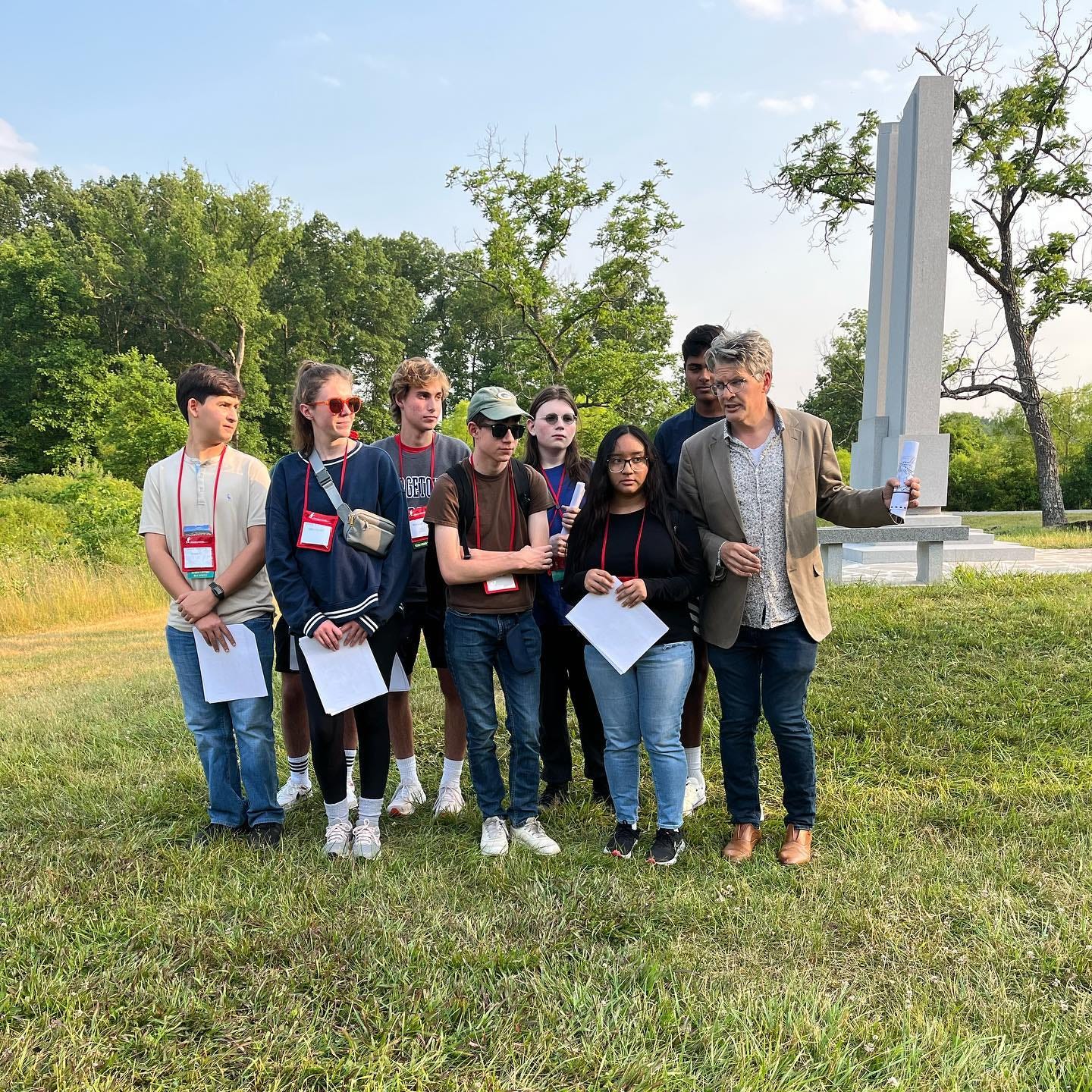I am in Gettysburg, Pennsylvania for the Civil War Institute’s annual conference. It’s an intensive, exhilarating, and exhausting five days of lectures and battlefield tours. On Saturday morning I spoke about my current book project about Robert Gould Shaw and the Second Massachusetts and tomorrow I will join Peter Carmichael and Jill Ogline Titus in leading a tour of the Gettysburg battlefield that focuses on the experiences of the thousands of enslaved laborers that traveled with the Army of Northern Virginia.
On Friday evening I decided to tag along with Peter for a tour that was specifically geared to a small group of high school students that are taking part in the conference. I am so glad I did.
I’ve been on a number of his tours over the years with Peter, but this one in particular stood out. It was a reminder of the endless ways that we can help our students and visitors generally to draw meaning from these iconic landscapes.
Peter put on a four-hour master class that brilliantly weaved together layer upon layer of interpretation and reflection.
At our first stop Peter reflected on the challenges of fully appreciating the violence and death that occurred on this landscape given its current pristine condition. How does the monument landscape and sheer beauty of the place shape how we think about violence and war? What do these monuments tell us about how we have chosen to remember the violence of the Civil War years?
Looking up toward Cemetery Hill from Confederate positions on the evening of July 1, 1863, Peter asked students to think about the ways in which the Lost Cause has shaped our fascination with the question of whether Gen. Richard S. Ewell should have attacked against Union positions before reinforcements could arrive and what this means for how we think about Lee’s responsibility for how the day ended.
At other stops Peter asked students to reflect on the meaning of masculinity, honor, and bravery for soldiers in the mid-nineteenth century. We thought about the connections between the battlefield and home front.
Near Spangler Springs Peter shared the story of the failed charge of the Second Massachusetts and Twenty-Seventh Indiana on July 3 against entrenched Confederates. Following their assault, Union soldiers were shot at and killed by Confederates as they attempted to rescue their wounded comrades, who were crying out for help in no-man’s land.
Students discussed whether they considered this to be murder.
To demonstrate why Civil War soldiers stood shoulder to shoulder and marched over open fields against entrenched enemy positions, Peter lined up the students to emphasize the importance of concentrated fire.
On lower Culp’s Hill Peter shared the letter of John Futch, and illiterate North Carolinian, whose brother was killed during the battle. Futch was later executed for desertion. After reading Futch’s reflections on the loss of his brother and the course of the war students talked briefly about whether his words should be understood as a political statement.
With the help of NPS historian Chris Gwinn students learned a bit about the ways in which the landscape itself has changed over the years and how it influences how we experience and interpret the battlefield.
This is just a small taste of what students were exposed to on this tour. It was a master class in how to interpret a Civil War battlefield.
It’s a reminder that our historic landscapes do not reveal their stories, meaning or significance independently of the visitor and interpreter. It requires creative questions, prompts and a good deal of imagination.
In just under four hours we had considered a wide range of questions surrounding the soldiers’ experience, memory, social history, and battlefield preservation. That was in addition to the most basic level of interpretation covering what took place on the battlefield.
For me, the preservation of the land on which Americans fought over the future direction of the nation can never be divorced from the role that each of us plays when we step on to the ground itself to reflect and find meaning.
It was a real pleasure watching Peter engage with these students. His passion for this history and battlefield preservation is just the thing that is likely to instill a life long interest in history for these young adults.






What a fantastic summary of the evening---and Jared Peatman does a great job with the CWI scholarship students for the entire week. We have a distinct curriculum for them. Having the students read the letters in the field helps them make a powerful connection to the place. I should note that many CWI scholarship students have gone into the historical profession, include NPS chief of interp at Gettysburg--Chris Gwinn
I almost went this year but schedule and finances did not let me...